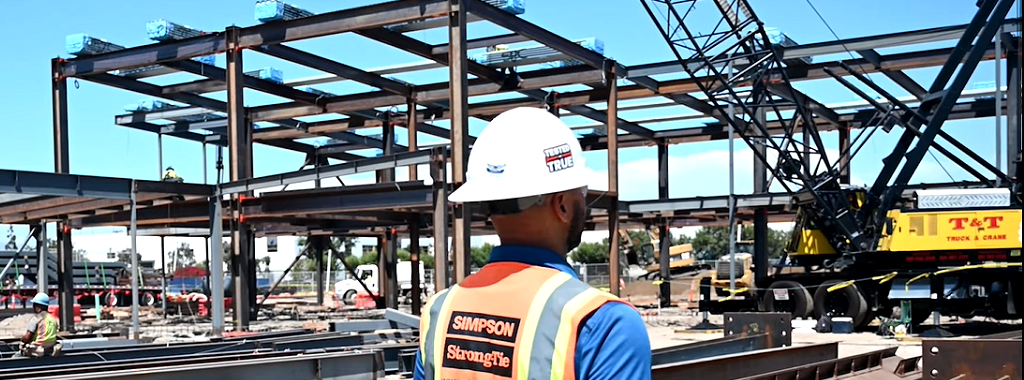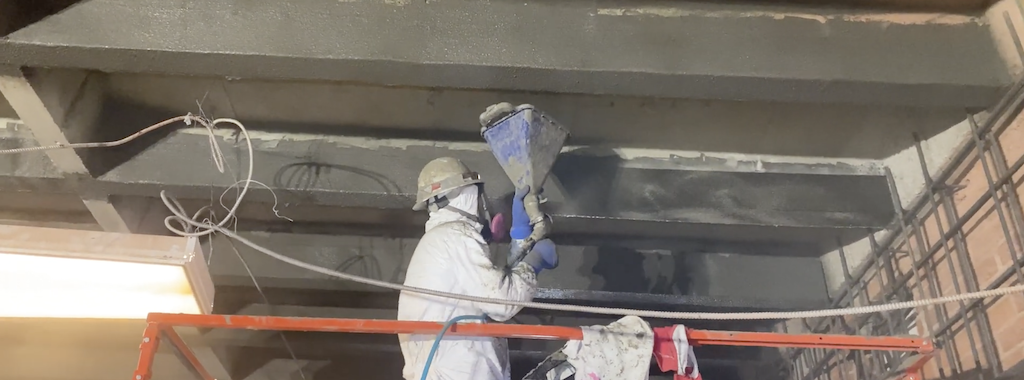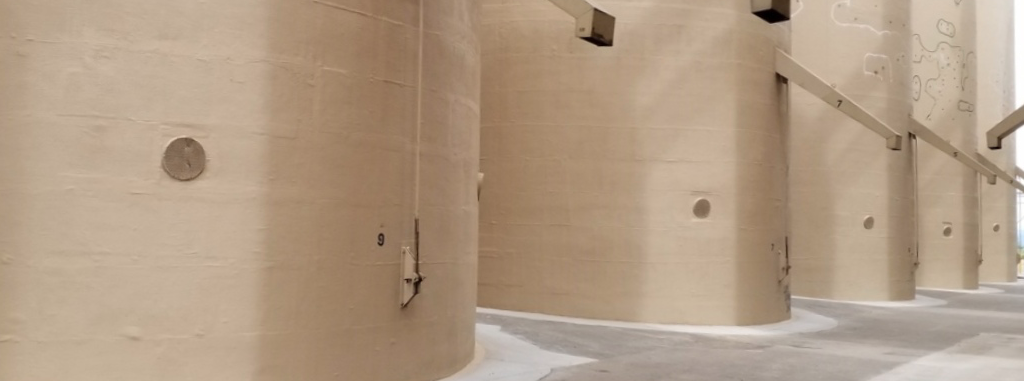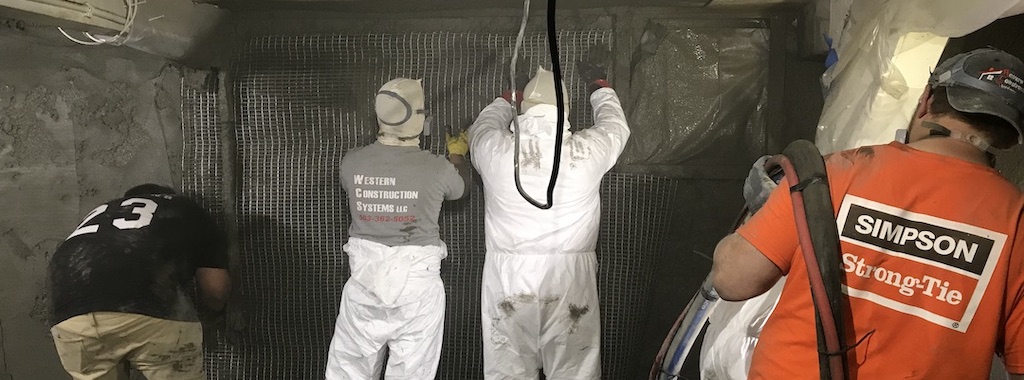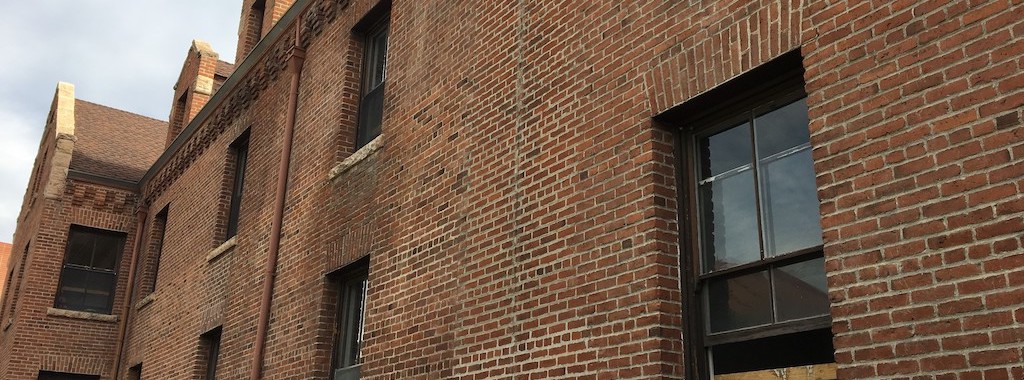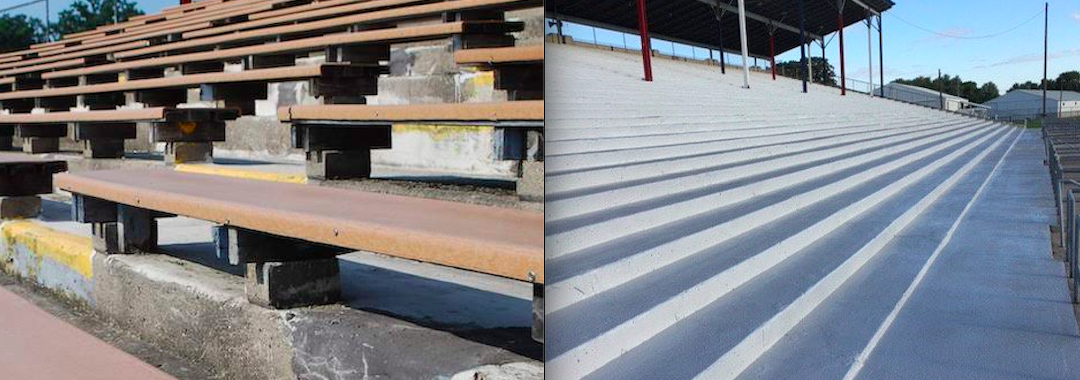Structural engineers for the Rose Avenue Elementary School project in Oxnard, California, a high seismic zone, chose to switch from special moment frames requiring welded connections to the Simpson Strong-Tie Yield-Link moment connection, which features bolted connections instead of onsite welding. This case study shares the experiences of structural engineers, fabricators and other project partners utilizing this innovative solution for structural steel construction.
Category: Restoration & Retrofit
Simpson Strong-Tie has the solutions you need to rehabilitate and retrofit. Build and repair safer and stronger structures.
Project Profile: Reinforcing Concrete Joists to Increase Load Rating
We’re excited to share another fiber-reinforced polymer (FRP) project that required both flexural and shear strengthening (photo below) of reinforced concrete joists to enable the slab floors to carry more live load. The structure is in Southern California, and appears to have been built in the 1950s or 1960s when pan joist construction was common. The EOR for this project, Structural Focus, is an experienced structural engineering firm known for seismic retrofit solutions. The FRP applicator was FD Thomas Structural Specialties, a contractor with decades of FRP installation experience.
Case Study: Gruening Middle School’s Seismic Damage Repair Solution
It can be a challenge to repair an earthquake-damaged structure.
During the 7.1-magnitude 2018 Anchorage earthquake, Gruening Middle School in Eagle River sustained more damage than any other school in the Anchorage School District. Review of the school showed the existing masonry walls suffered damage and separation from the roof. During the retrofit design, the Reid Middleton structural engineering team (Anchorage) determined the masonry walls weren’t adequately reinforced to meet current code requirements. They were seeking an easy-to-install strengthening solution that wouldn’t add significant weight to the building.
Case Study: Shoring Up Aging Concrete Grain Silos with Fiber-Reinforced Polymer
The Simpson Strong-Tie® Composite Strengthening Systems™ was used to restore and strengthen 6 distressed cast-in-place concrete grain silos with a combination of carbon and glass FRP, meeting a tight timeline and budget.
Case Study: Western Construction Systems FRCM Project
The Simpson Strong-Tie fabric-reinforced cementitious matrix (FRCM) system was used to strengthen unreinforced concrete basement walls at a Portland residence and provide a fresh new look for years to come.
Case Study: Manzanita Hall
Manzanita Hall is one of three remaining buildings on the University of Nevada, Reno, campus that were constructed prior to 1900. Originally named the Girls’ Cottage, Manzanita Hall was built in 1896 and was used to house 97 women in double and single rooms. Architecturally, it a created a Victorian atmosphere and offered a spacious student lounge, complete with a grand piano and a spectacular view of Manzanita Lake.
Several years ago, the hall was deemed seismically inadequate, and the electrical, plumbing and HVAC systems were likewise found to be seriously outdated and insufficient for modern college life. These structural deficiencies necessitated its closure in 2015.
Case Study: The Freeborn County Fair Grandstand
The Freeborn County Fair in Albert Lea, Minnesota, has a rich history going all the way back to 1859, a year after Minnesota became a state. In addition to its longevity as a county fair facility, the Freeborn County Fair is known for its large and spacious grandstand and the many attractions it has hosted since it opened in 1940 — including motorcycle races, stock car races, auto thrill shows, horse races, wrestling events, mule races and tractor pulls.

